This article was co-authored by Karen Litzy, PT, DPT. Dr. Karen Litzy, PT, DPT is a licensed physical therapist, international speaker, owner of Karen Litzy Physical Therapy, PLLC, and the host of the Healthy Wealthy & Smart podcast. With over 20 years of experience, she specializes in a comprehensive approach to practicing physical therapy utilizing therapeutic exercises, manual therapy, pain education, and home exercise programs. Karen holds a Master of Science in Physical Therapy and a Doctor of Physical Therapy from Misericordia University. Karen is a member of the American Physical Therapy Association (APTA) and is an official spokesperson for the APTA as a member of their media corps. She lives and works in New York City.
There are 12 references cited in this article, which can be found at the bottom of the page.
This article has been viewed 48,554 times.
Sciatica is a painful condition where compression or irritation of the sciatic nerve causes pain in your leg, hips and lower back. Exercises are an excellent way to keep your muscles strong and possibly reduce sciatica pain. Although you can perform exercises at home, it’s very important to be under the supervision of a professional physiotherapist to avoid injury and insure proper form. Exercises to treat sciatica are usually focused on strengthening your back muscles, giving support to your lower spine, and enhancing your flexibility and posture.[1]
Steps
Performing Exercises
-
1Try the plank exercise. Many health professionals will recommend core strengthening exercises like the plank to help alleviate pain. Stronger core muscles help to support and relieve your back.[2] They also help keep your pelvis in a neutral alignment, decreasing compression of the nerves.
- Lie face-down on a soft surface, such as an exercise mat. Prop yourself off the ground by using your forearms and toes to support the body. The elbows should be directly under the shoulder. Make a double chin and keep the shoulder blades back and down to maintain proper spinal alignment.
- Tighten the abdomen as if you are about to be punched in the gut. Tuck your hips under and squeeze your glutes, keeping your entire body in a straight, rigid line. Try to make yourself as long and as strong as you can from the crown of your head out through your heels.
- Maintain this position for 10 seconds or until you begin to wobble. Breathe normally throughout the plank. Do three sets with 30 second rests in between. Work your way up until you can do 30 second holds with good form.
-
2Perform side planks to engage the oblique muscles. These muscles protect the spine against sudden twisting movements and provide additional support to your back.
- Start by laying on your left side on a soft surface like an exercise mat.
- Lift your body off the surface by supporting your weight with the left elbow and outer side of the left foot. Your left shoulder should be tracking straight over your left elbow.
- Maintain an erect posture as if you are standing tall. Look straight, brace your abdomen, keep the shoulders back and down, and squeeze your butt.
- You should maintain this position for 10 seconds by continuously engaging your left oblique muscles (the muscles at the side of your belly).
- This can be a very challenging move. If you are struggling, try staggering the feet for more support, or performing with the left knee down.
- Do three sets of 10 second holds. Work your way up to 30-second holds with proper form. Switch sides and repeat.
Advertisement -
3Do lying leg lifts. Leg lifts will help strengthen your lower abdominal muscles and remove the strain from your lower back and sciatic nerve.[3]
- Start by lying down on the floor on your back either on an exercise mat or on the carpet. Press your lower back down to the floor and pull your bellybutton in toward the floor.
- Your pelvic alignment is essential to getting this exercise right an not causing further harm. It may be necessary for you to put your hands under your lower back for support, or put a slight bend in your knees.
- Keeping both legs bent at the knee, slowly raise your left leg off the floor while keeping your knee bent. Hold for five seconds, and return back to the original pose.
- Then do the same with your other leg. Repeat the alternation five times or as many times as you are able.
-
4Try bridge exercises. This exercise helps strengthen the back of your legs, buttocks, and lower back.[4]
- Lay down on the floor on your back with both knees bent and the soles of your feet flat on the floor.
- Then, push up using your buttocks while your back is straight. Your body should form a straight line declining from your knees to your head.
- Hold for five seconds to 10, and relax. Repeat this exercise five times if able.
-
5Try curl ups. This exercise is similar to a traditional crunch. It strengthens the abs and the upper rectus to help relieve pressure from the lower back.
- Begin by laying flat on your back on an exercise mat or carpet. Fold your arms across your chest.
- Slowly roll and lift your head up off the ground followed by your shoulders. You should feel your entire core become tight and engaged.
- Hold this position for two to four seconds or as long as you're able. Slowly lower your shoulders and head back down to the starting position.
- Continue with this exercise until you can complete two sets of 10 curls.
Performing Stretches
-
1Stretch your hamstrings. A standing hamstring stretch is an exercise that can help treat sciatica pain by stretching and lengthening the hamstring (back of your thigh) muscles.[5]
- Stand in front of a low table or sturdy box. Place one heel on the table or box on it while standing straight and keeping your foot flexed and toes pointed to the ceiling.
- Slowly bend over at the waist, making sure to keep your back straight. Try to touch your toes, as much as you can until you feel a slight stretch in your hamstrings. If you're not able to touch the toes, rest your hands on your shin or knee for a more comfortable position.
- Hold the stretch for 20-30 seconds, then return your foot to the floor. Repeat this stretch two to three times per leg.
-
2Do a back flexion stretch. Flexing and bending your back forward can alleviate pain from sciatica. This helps to alleviate the irritation or impingement on the nerve.[6]
- Start by lying on your back on the floor on an exercise mat or carpet. Bend both of your knees while raising them towards your chest.
- You will be able to feel a light stretch at the lower part of your back. Hold your knees at a position that you feel a light, yet comfortable stretching sensation in your lower back.
- Hold the stretch for thirty seconds, and repeat four to six times.
-
3Try child's pose. Although a common pose to yoga, the child's pose is another exercise that can cause the comfortable, forward bending stretch that can help alleviate sciatica pain.[7]
- Sit on your knees on a carpet or exercise mat. Lower your forehead to the ground and rest your head comfortably.
- Stretch your arms out in front of you and over your head and just allow them to relax, palm-side down on the mat or carpet in front of you.
- Hold this position for 30 seconds and repeat four to six times as you're able and feel comfortable.
-
4Stretch your piriformis muscle. The piriformis stretch or "ankle over knee" exercise helps to loosen the piriformis muscle and increases its flexibility. Increased piriformis flexibility reduces the pressure on the sciatic nerve underneath.[8] It is important to stretch the piriformis because, while it is very small and deep, it runs directly over the sciatic nerve. Increased tension in this muscle will cause compression of the sciatic nerve (possibly all the way down the leg).
- Lie down on your back on the carpet or exercise mat. Bend both of your knees at a 90 degree angle and keep feet flat on the floor.
- Place the left ankle on top of the right leg's knee. Your legs should now form a figure four pattern. The outer side of the left ankle should rest comfortably on the right leg’s front thigh.
- Grab the back of your right thigh and slowly pull your thigh forward. You should feel a stretch deep in the left butt muscle. This is the piriformis being stretched.
- Keep your butt on the ground the whole time and hold the position for 30 seconds. People older than 40 years old should hold the position for 60 seconds.
- Switch legs and repeat two to three times per leg.
Incorporating Lifestyle Changes to Manage Sciatica
-
1Stay active. Although you might feel like you want to rest or take time off from being physically active, studies have shown that being inactive or taking to bed rest might be counterproductive to managing your sciatica.[9]
- The USDA typically recommends that you participate in about 150 minutes or 2 1/2 hours of physical activity or cardio exercises each week.[10] This breaks down to 30 minutes five days a week.
- If you're not currently exercising, just starting, or not currently doing 150 minutes of exercise each week, take it slow. Start with 60 minutes a week and then slowly progress until you meet your goal.
- Higher intensity, high impact exercises like running might not be appropriate for your condition. However, walking or water aerobics may be gentler and more comfortable for you.
-
2Use hot and cold packs. People with sciatica and other muscles aches and pains have successfully used a combination of hot and cold compression packs to ease their pain.[11]
- Start with icing your painful muscles and joints. This helps decrease inflammation which is one of the main causes of irritation to the sciatic nerve. Apply the ice pack for about 20 minutes several times a day. Make sure your ice pack is covered in a towel.
- Transition to hot packs after using the cold packs. Use a few times a day for relief.
- You may want to alternate between both hot and cold packs. If you exercise, stretch or do strengthening exercises, you may start with cold to prevent inflammation and then use heat to ease the pain.
-
3Take OTC pain medications. There are several options for sciatica pain management. These might help you stay active, stretch and strengthen the muscles to help reduce your pain long-term.[12]
- Although the pain you may feel from your sciatica may be intense, try self-medicating with over-the-counter or OTC medications. If you can manage the pain with these, it's better than having to take narcotic or opioid medications.
- Try: paracetamol and NSAIDS for relief. Make sure to read the dosage and consumption instructions. Also, always ask your doctor prior to beginning any OTC pain medications.
- If your pain is not well-managed with these types of medications, talk to your doctor about possibly taking prescription medications for additional relief.
-
4Be careful when lifting heavy objects. If you are about to lift anything, consider the weight you are going to lift. Don’t lift any heavy things that could strain your back or cause more irritation and pain.
- If you need to lift something heavy, use proper form: bend your knees as if you are sitting down into a chair, and using your hips, let your leg muscles lift instead of your back muscles.
- Don’t pull heavy things or boxes across the floor; instead, push them slowly.
- Alert your work or family members of your pain. Ask for "light duty" or help if you need to lift heavy objects on a regular basis.
-
5Maintain good posture. Maintain correct posture while standing, sitting, or even sleeping. This can help ensure that you're not aggravating your condition by posture.[13]
- When standing, keep your shoulders pulled back, yet relaxed. Lift your head up tall as if there is a string attached to the middle of your head and is pulling you upwards. Pull in your stomach slightly and put equal weight on both feet.
- Sit with your back straight and use a pillow to support your lower back, with your feet stable on the floor. Like standing, keep shoulders pulled back and relaxed.
- When sleeping, make sure that your bed mattress is firm and distributes your body weight evenly, while supporting your back in a straight position.
-
6Make an appointment with a physical therapist. Many times, sciatica pain is not well managed with at-home exercises or OTC pain medications. Try meeting with a physical therapist for a more intensive therapy program.[14]
- A physical therapist is a health professional that can assist in you in managing your sciatica pain by helping you stretch and strengthen the proper muscles.
- Ask your primary care doctor or look online for a local physical therapist. Many specialize in different types of injury and pain management. Sciatica is fairly common and is usually familiar to most therapists.
References
- ↑ http://www.nhs.uk/conditions/Sciatica/Pages/Introduction.aspx
- ↑ https://health.clevelandclinic.org/strong-core-best-guard-back-pain/
- ↑ http://www.spine-health.com/wellness/exercise/exercise-sciatica-spinal-stenosis
- ↑ https://orthoinfo.aaos.org/globalassets/pdfs/2017-rehab_spine.pdf
- ↑ https://www.wentworthmedical.nhs.uk/syndication/live-well/exercise/exercises-for-sciatica
- ↑ https://oahct.com/wp-content/uploads/2020/04/OAH-SCIATICA-EXERCISES-R2.pdf
- ↑ https://www.brownlowhealth.co.uk/wp-content/uploads/2019/04/sciatica-printable-pdf.pdf
- ↑ https://oahct.com/wp-content/uploads/2020/04/OAH-SCIATICA-EXERCISES-R2.pdf
- ↑ https://www.health.harvard.edu/pain/sciatica-home-remedies-and-self-care
- ↑ http://www.cdc.gov/physicalactivity/basics/adults/
- ↑ https://www.health.harvard.edu/pain/sciatica-home-remedies-and-self-care
- ↑ https://www.webmd.com/back-pain/sciatica-pain-relief-options
- ↑ Karen Litzy, PT, DPT. Physical Therapist. Expert Interview. 27 August 2020.
- ↑ https://www.webmd.com/back-pain/treatment-for-sciatica
- ↑ Karen Litzy, PT, DPT. Physical Therapist. Expert Interview. 27 August 2020.
About This Article
To treat sciatica with exercise, try core strengthening exercises like planks to help support and relieve your back pain. Additionally, perform side planks to engage the oblique muscles, which protect your spine when twisting. You can also do bridge exercises, which strengthen the back of your legs, lower back, and buttocks. When performing a bridge, lay on your back with both knees bent and the soles of your feet on the floor. Then, push your hips toward the ceiling while keeping your back straight. Start by doing 5 sets of each exercise, trying to hold each pose for 5 to 10 seconds. For more information from our Fitness co-author, including how to stretch to relieve sciatica, keep reading!
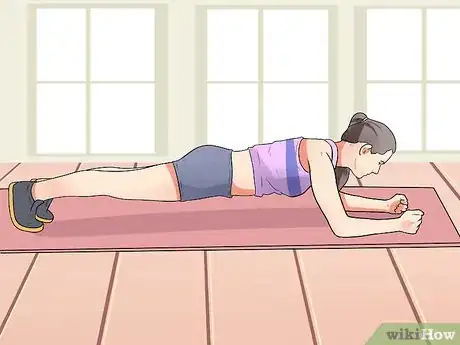

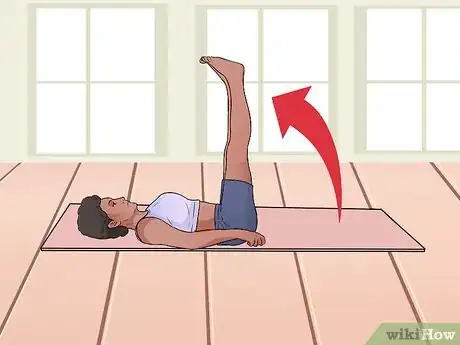
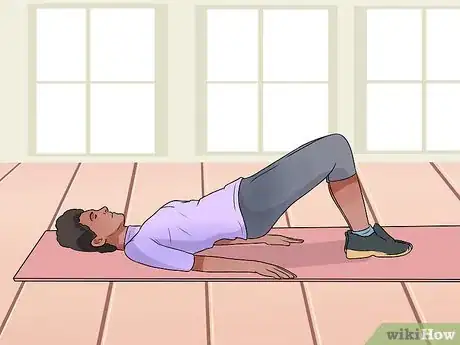
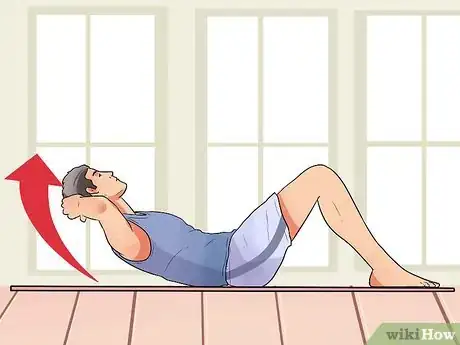
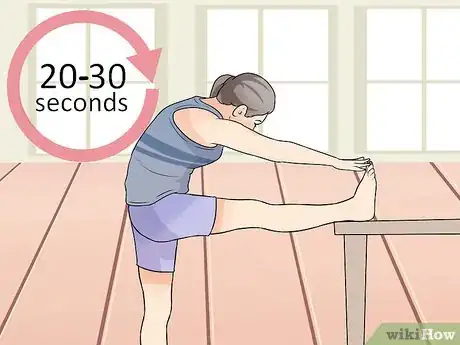

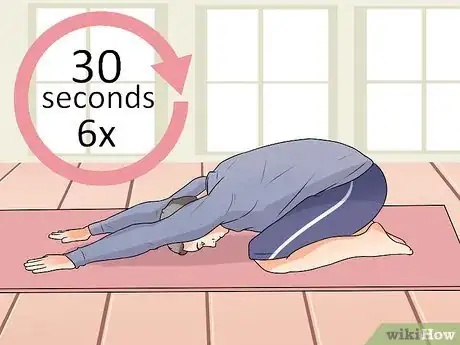

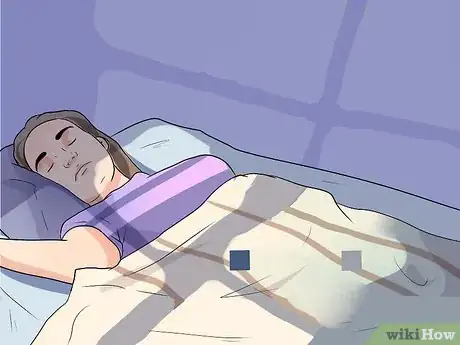


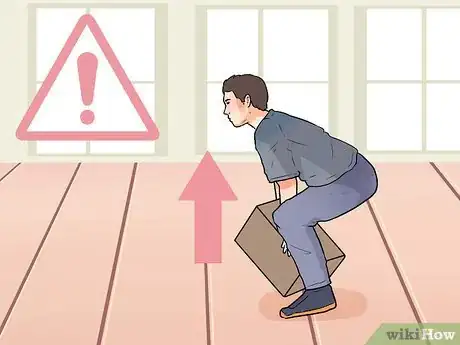
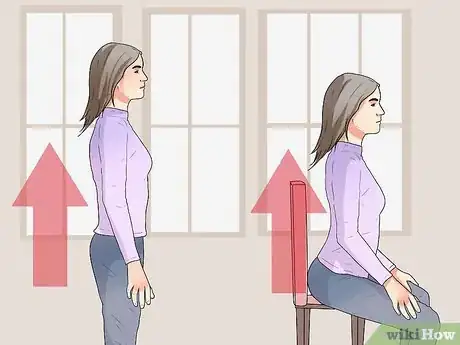

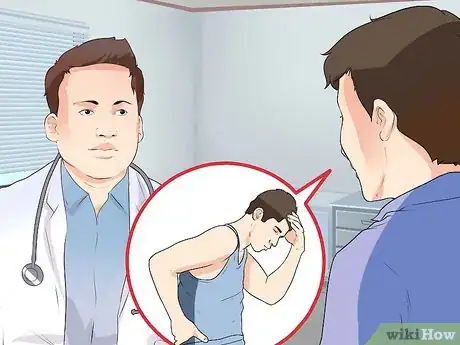

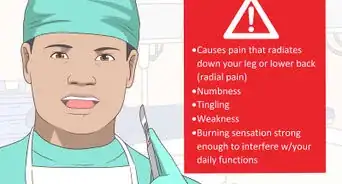
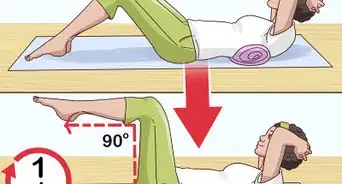

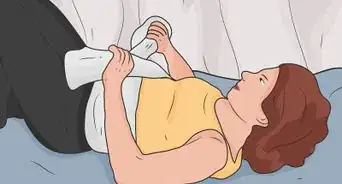
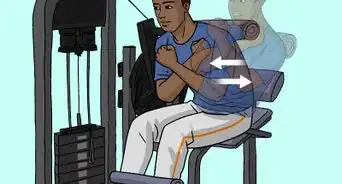

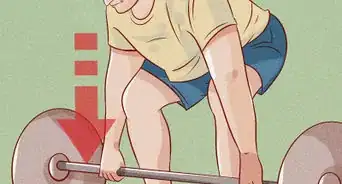
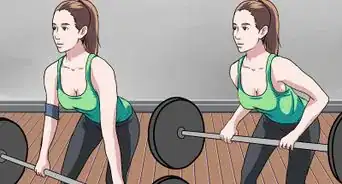






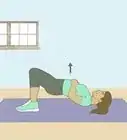
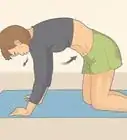
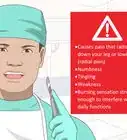
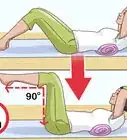



































Medical Disclaimer
The content of this article is not intended to be a substitute for professional medical advice, examination, diagnosis, or treatment. You should always contact your doctor or other qualified healthcare professional before starting, changing, or stopping any kind of health treatment.
Read More...